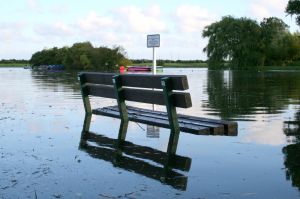Oh No, It’s Raining Again
 Rain can be a miracle when it’s needed and a curse when there has been too much. Each spring and summer we seem to have periods of rain that come in excess, flooding lawns and roads. When the rain continues to fall, it’s the foundation of your home and the sump pump that have to step up to the plate to keep your home dry. Sometime, all the best precautions and intentions aren’t enough to keep the water out and it’s the lowest level of your home that takes the brunt of the problem.
Rain can be a miracle when it’s needed and a curse when there has been too much. Each spring and summer we seem to have periods of rain that come in excess, flooding lawns and roads. When the rain continues to fall, it’s the foundation of your home and the sump pump that have to step up to the plate to keep your home dry. Sometime, all the best precautions and intentions aren’t enough to keep the water out and it’s the lowest level of your home that takes the brunt of the problem.
There are a few things you can do to help the situation while it’s occurring, as well as what to do once you’re squishing through water in the basement.
Be Ready
- During heavy downpours, check your basement frequently. Simply walk through each room, keeping an eye out for any issues.
- Store items on shelves and in plastic totes that are easy to move and water resistant. Stacks of heavy cardboard boxes can be a mess to move quickly and do a poor job of preserving contents from moisture.
- Check your sump pump; make sure it’s working properly. Many people who live in areas that then to have flooding issues prefer to keep a new, back-up sump pump on hand.
- Have a battery powered supply source (inverter) to run your sump pump should a storm knock out power.
- Check that your sump pump hose is carrying water away from your home, doesn’t slope toward your house and isn’t damaged or crimped.
- Watch lower level windows to make sure water isn’t seeping in through old, worn seals.
What to Do When Your Basement Gets Wet
- Move furniture and rugs that are not wet to a dry area of your home.
- Run a dehumidifier in a safe area of the basement to assist with moisture and smell.
- For minor water seepage, use a wet shop vac to remove water and add fans.
- Make sure good ventilation to allow drying.
- Contact professional carpet cleaners to help clean and sanitize carpets.
- You should always notify your insurance company. Coverage can vary depending on the type of water intrusion, but notification is key!
In the case of more extreme water damage and/or frequent water issues, you can give us a call to assist with assessing damage and restoration tasks that may include things like removing carpeting and pad, replacing saturated insulation in exterior walls, and replacing damaged sheet-rock and wood trim. All situations are different, and clean-up and repair efforts will vary greatly.
Just don’t wait or leave water. Act immediately. It’s important to prevent mold and mildew from growing, as well as addressing any issues that can prevent future water seepage.